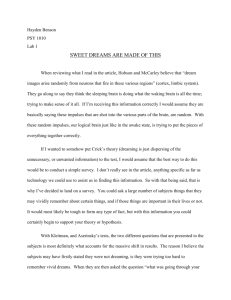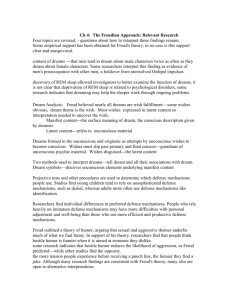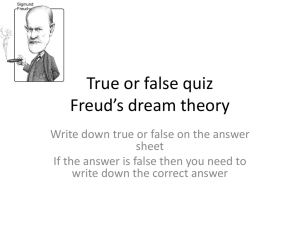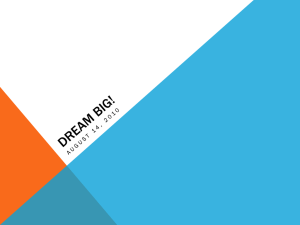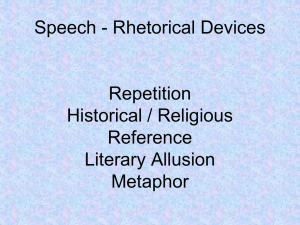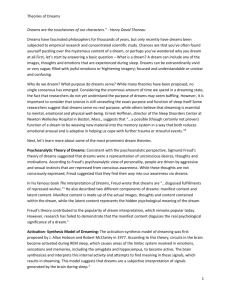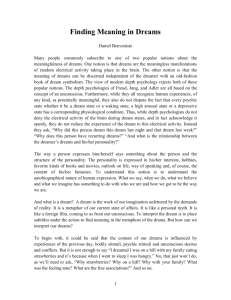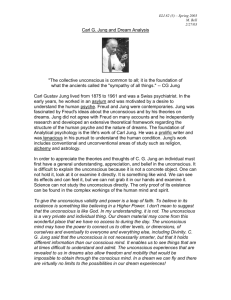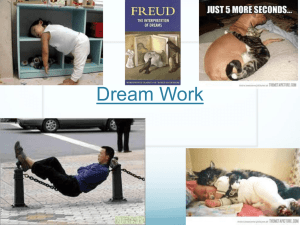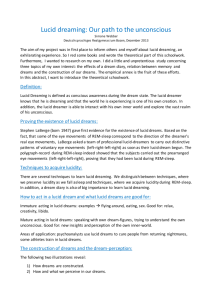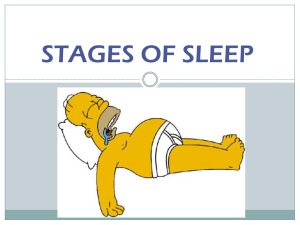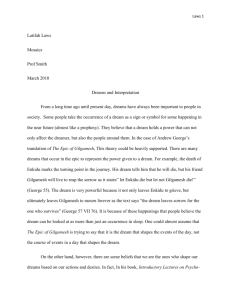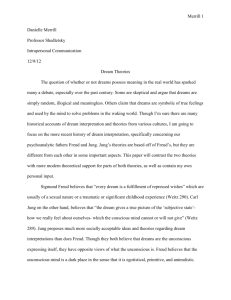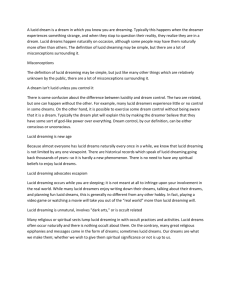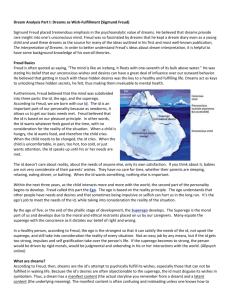The Interpretation of Dreams PowerPoint
advertisement
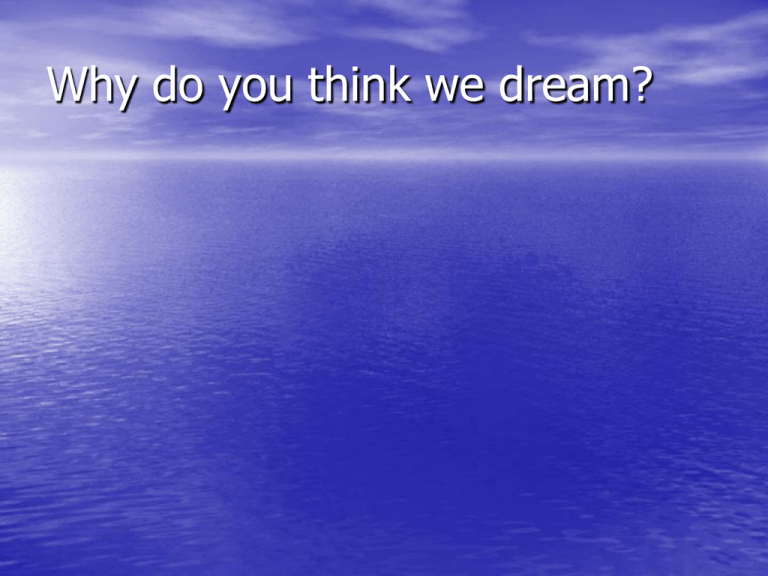
Why do you think we dream? The Interpretation of Dreams Freud and Jung Freud and dreams: • FREUD was fully aware of the importance of dreams and described them as the "ROYAL ROAD" to understanding the unconscious. • His big idea is that dreams have MANIFEST (what we actually dream) and LATENT (the unfulfilled wish that the dream represents) meanings. Freud’s main thoughts about dreams: • our conscious mind actively tries to reject the messages of our dreams • we "repress" this knowledge and so dreams are often an expression of a repressed wish that we would rather not admit to • dreams require analysis to discover their true meaning 1 thing you like/ dislike and 1 question • Freud's main technique for analysing the dream was free association. Here the dreamer is encouraged to look not at the direct content of the dream but at the thoughts and emotions it generates. These will then lead to other thoughts and emotions and so on. At its simplest free association is simply saying whatever comes into your head. Example of free association • Freud would look at each individual component of a dream and use each as a starting point for free association then attempt to pull all the threads together into an overall analysis. • In this way the dreamer can "sneak up" on repressed emotions. The Collective Unconscious & Jungian Archetypes Like Freud, Jung believed that dreams are important gateways to unknown parts of ourselves. • Whereas Freud believed that dreams were frequently distorted in a subconscious attempt at repression, • Jung believed that any such distortion was usually unintentional. • The dream was a direct message from the personal unconscious. • Jung was especially interested in studying the archetypes related to mythology and old religions. For example, the Dragon (or serpent) was an archetype representing the unconscious mind that had to be slain by the Hero. (archetypes could be literal or figurative) Common archetypes: • Hero (quest) • Mentor • Villain • Innocent • Healer • Wise woman • Jung preferred to stay with the dream symbols • • themselves and analyse each one in detail - a process of amplification. The dreamer was encouraged to "brainstorm" all the different symbolic associations for each aspect of the dream. These would include personal, cultural and archetypal associations. As an example, say a dream included birds. Possible associations with this symbol would be flight, freedom, cage, etc. Current theories on dreams: • Dreams as rehearsal (teach us what to do if bad things happen) • Dreams as practice and learning (we learn better if we can sleep on it) • Dreams are our brains chance to make sense of what we experienced during the day • Dreams may work to protect and prepare us. Lucid Dreaming: • Lucid dreaming means dreaming while knowing that you are dreaming. • Lucidity usually begins in the midst of a dream when the dreamer realizes that the experience is not occurring in physical reality, but is a dream. • Often this realization is triggered by the dreamer noticing some impossible or unlikely occurrence in the dream, such as flying or meeting the deceased. Most Common Reason People want to lucid dream: • Wish fulfillment • Overcoming nightmares • Creative problem solving Great site to learn more: • http://www.lucidity.com/ Old Hag Syndrome Old Hag Syndrome= Sleep Paralysis Disorder • research suggests that sleep paralysis is correlated with REM • • • (rapid eye movement) sleep. Our brain is fully active but our body is totally paralyzed. Neuro-scientists posit that sleep paralysis (and consequently old hag syndrome) is the result of our mind waking up while still in a REM cycle, and our body remaining immobilized because of this safety mechanism which causes the often terrifying sensation of being fully awake and aware, and at the same time paralyzed. Equivalent to a lucid Nightmare. • Not everyone believes that this fully explains the experience…. Vsauce- why do we dream? • http://www.youtube.com/watch?v=7GGzc 3x9WJU
